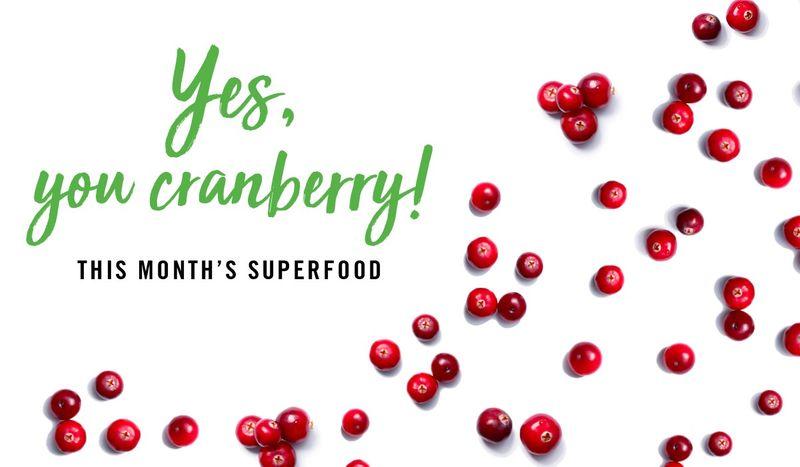This bold, bite-size berry is not only a staple at Thanksgiving dinner, but it also makes for an awesome source of vitamins and antioxidants. One of the few fruits native to North America, it can be eaten dried, melted, or in a juice or sauce — and that’s why the cranberry takes the crown as this month’s SuperFood.
Even though they are about 90 percent water, cranberries come packed with a bold, tart flavor and are rarely eaten raw. You might not be able to pop them in your mouth and enjoy right away like a blueberry (although they are technically close cousins), but luckily these fruits show up in a variety of different forms for you to try.
Everyone knows cranberries reign supreme during Thanksgiving, appearing on dinner tables across the country to perk up pastries, side dishes and meats. Need cranberry sauce? Simply melt down some cranberries with sugar and lemon zest. Stuffing? Cook cranberries together with onions, celery, bread cubes and broth. You can even baste a turkey breast with a mouthwatering glaze of melted cranberries, cinnamon and brown sugar.
If those ideas sound tempting and you want to stock up on fresh cranberries for homemade recipes of your own, you can find them at Campus Market and Village Market. Look for cranberries that are unwrinkled and firm to the touch. Red Radish also debuted a special salad for this month, the Gyro Complex Salad, which features cranberries.
Fortunately, these fruits can also be enjoyed all year round. Add dried cranberries to a salad, oatmeal or cereal, or a homemade trail mix with nuts and seeds. Their tart taste complements sweetness and also balances fresh herbs, so they pair well with chocolate, cinnamon, apple and mint. You can also sit down to a refreshing glass of cranberry juice, but just beware of too much added sugar.
No matter how cranberries show up in your diet, they present a ton of nutrients your body craves. With cranberries, you can give yourself a healthy dose of Vitamin C and E, reduce your risk of cardiovascular disease and even slow cancer progression. Eating cranberries also enhances your oral health, as it renders bacteria unable to bind to the surface of your teeth.
The cranberry is a unique fruit in that it is tough to grow. They are a wetland fruit, growing on low-laying vines and only able to survive under special conditions: abundantly fresh water, sandy soil and a growing season from April to November. The major cranberry production areas are New Jersey, Massachusetts, Oregon, Washington and Wisconsin.
The Native American tribe Lenni-Ienape, who resided in modern day New Jersey, named wild cranberries “Pakim,” meaning “bitter berry.” They used them not only as their food, but as a symbol of peace and friendship. Be sure to keep that in mind when asking your uncle to pass the cranberry sauce.

